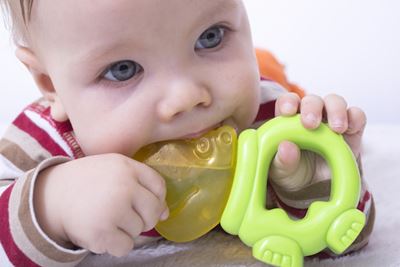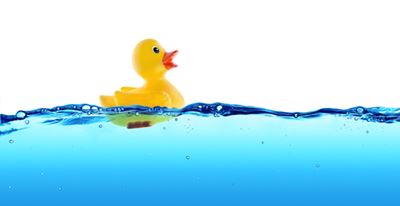Should I worry about mold on my kid’s toys?
It is a troubling moment when you look at a toy that your child has been playing with nonstop over the past several weeks and discover a disgusting-looking black film on or inside of it. If you’re like me there are two thoughts running through your mind when that happens. First, is this going to make my child sick? And second, how could I be so irresponsible to let this happen? I should have paid closer attention or cleaned up better for my kids.
If this has happened to you, and it’s causing some major Mommy-guilt (or Daddy-guilt!), don’t worry. Here’s what you need to know about mold on your kids’ toys.
Mold usually isn’t dangerous
Here’s where you can indulge in a big sigh of relief. Despite what you might see on sensationalized television shows, mold generally is not harmful to most people. Mold can be a problem for people with certain medical issues (those who are receiving chemotherapy, are immunocompromised, have contracted HIV or are allergic to mold). However, the vast majority of us are routinely exposed to trace amounts of mold in our environment, and our bodies are able to fend it off very well. And despite what you may hear elsewhere, the color of the mold does not indicate whether it is harmful or not.
Now, that doesn’t mean that we necessarily want mold in our home or on our kids’ toys; it just means that if (or better yet- when) it becomes an issue, we manage it but we don’t lose our minds over it. There will be plenty of parenting issues that you might lose your mind over, but this doesn’t have to be one of them.
Teething toys
You may remember not too long ago when online videos were widely circulated showing parents cutting open a popular teething toy, Sophie the giraffe, to discover mold on the inside. Parents were horrified to discover that there could be mold inside of a toy that their child routinely puts in their mouth.

Although it’s not a dire health risk worthy of panic and fear like many would have you believe, it is, for lack of a better word, gross. It’s not in keeping with the standards of cleanliness we desire for our children. Should we throw out all of the Sophie the giraffes of the world and ban them from our homes? Should avoid teething toys completely for fear of mold contamination?
I don’t believe so. With some simple precautions, you can allow your child the benefit and enjoyment of teething toys while still avoiding these mold issues. Teething toys are designed to prevent moisture from getting inside the toy, but improper use or cleaning of the product can contribute to moisture getting inside and forming mold. Teething toys shouldn’t be submerged in water for cleaning, but can be wiped off with soapy water or a dilute bleach solution, carefully avoiding the opening to prevent moisture from getting inside. Teething toys aren’t bath toys, either. Keep them from being submerged in water to avoid mold.
It’s also important that you follow the manufacturer’s directions for use and cleaning of each specific toy, as improper use or cleaning can cause unwanted issues. It’s likely that the problems parents experienced with Sophie the giraffe resulted from using and cleaning the toy differently than the toy maker intended, so keep that in mind.
Bathtub toys
Bathtub toys are a different problem than teething toys. They are most assuredly going to get submerged in water many times over, and where there is moisture there will be mold. Toys where you squeeze water into them and squirt the water out are most likely going to grow mold on the inside over time, so don’t be shocked when you see it. It’s just the way the world works. There are a couple of things you can do about this.

First, you can clean bath toys regularly. You can put bathtub toys in hot bath water, add a little bleach and let them soak for a few minutes. Squeeze toys that allow water on the inside may need to be squeezed and released to allow some bleach solution inside. Doing this regularly will help maintain the cleanliness of your bath toys.
I can tell you, though, that this can feel like a lot of work so I’ve adopted a bit of a different strategy. First, I don’t spend a lot of money on bath toys to begin with. Every parent will tell you that kids are just as satisfied with an old Tupperware container and a disposable cup to play with in the bathtub as the $40 ferris wheel/waterfall/superhero contraption you saw on the toy aisle.
If and when I do buy bath toys or someone gives them to my kids, I recognize that these are temporary. We are not going to keep them for years and pass them down to future generations. My kids play with them for a while, and when they begin to show signs of mold, I throw them out. Bath toys are not meant to last forever, so acceptance of that fact relieves me of a lot of work and worry.
I also try to keep in mind that the occurrence of mold on bath toys is not a measure of my cleanliness or my parenting prowess. I have not failed as a parent if my child is discovered playing with a toy that harbors some mold. If in doubt, we throw it out and we move on to more important things. It’s that simple.







